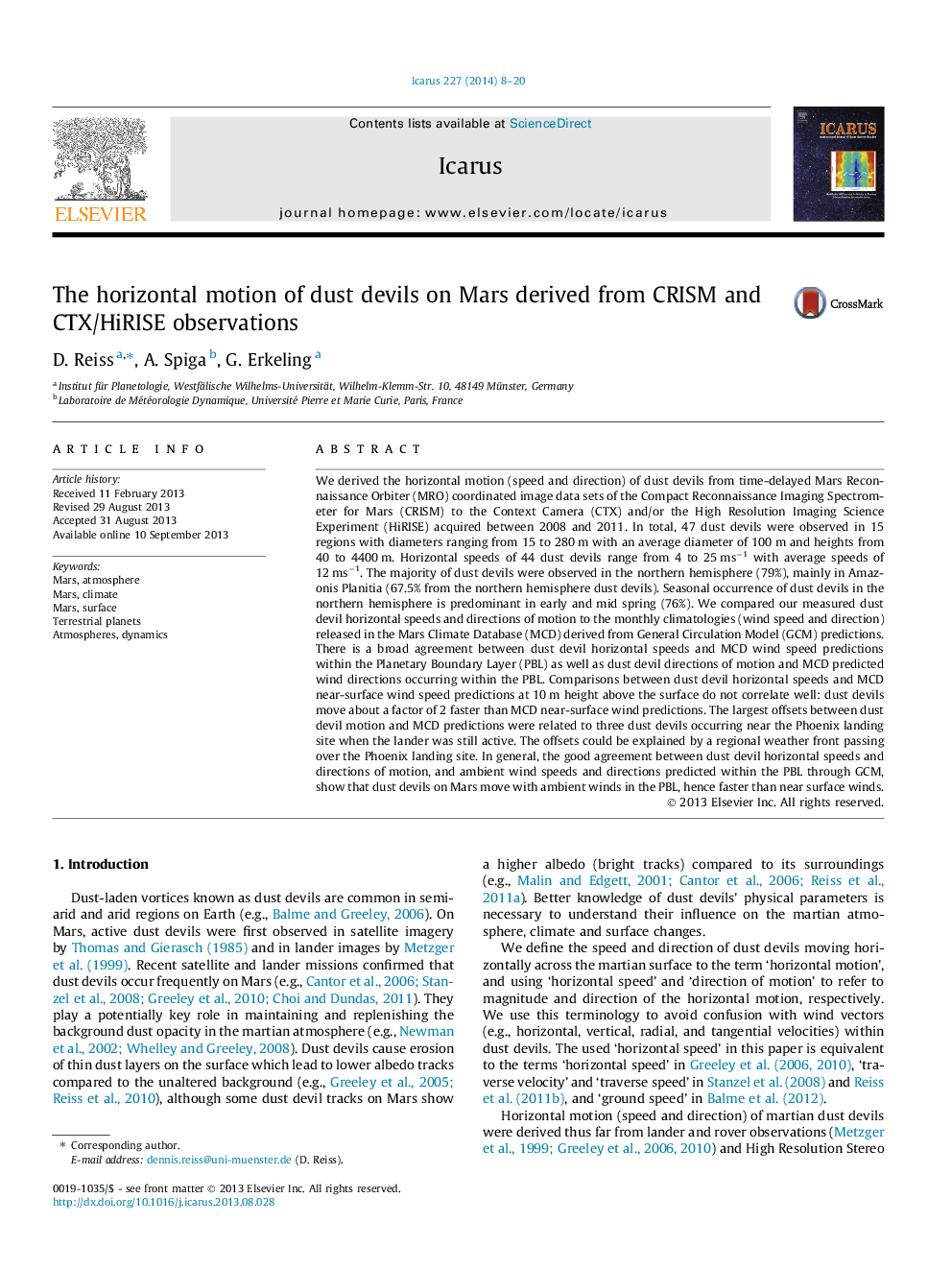| کد مقاله | کد نشریه | سال انتشار | مقاله انگلیسی | نسخه تمام متن |
|---|---|---|---|---|
| 1773255 | 1523563 | 2014 | 13 صفحه PDF | دانلود رایگان |
عنوان انگلیسی مقاله ISI
The horizontal motion of dust devils on Mars derived from CRISM and CTX/HiRISE observations
دانلود مقاله + سفارش ترجمه
دانلود مقاله ISI انگلیسی
رایگان برای ایرانیان
کلمات کلیدی
موضوعات مرتبط
مهندسی و علوم پایه
علوم زمین و سیارات
علوم فضا و نجوم
پیش نمایش صفحه اول مقاله

چکیده انگلیسی
We derived the horizontal motion (speed and direction) of dust devils from time-delayed Mars Reconnaissance Orbiter (MRO) coordinated image data sets of the Compact Reconnaissance Imaging Spectrometer for Mars (CRISM) to the Context Camera (CTX) and/or the High Resolution Imaging Science Experiment (HiRISE) acquired between 2008 and 2011. In total, 47 dust devils were observed in 15 regions with diameters ranging from 15 to 280Â m with an average diameter of 100Â m and heights from 40 to 4400Â m. Horizontal speeds of 44 dust devils range from 4 to 25Â msâ1 with average speeds of 12Â msâ1. The majority of dust devils were observed in the northern hemisphere (79%), mainly in Amazonis Planitia (67.5% from the northern hemisphere dust devils). Seasonal occurrence of dust devils in the northern hemisphere is predominant in early and mid spring (76%). We compared our measured dust devil horizontal speeds and directions of motion to the monthly climatologies (wind speed and direction) released in the Mars Climate Database (MCD) derived from General Circulation Model (GCM) predictions. There is a broad agreement between dust devil horizontal speeds and MCD wind speed predictions within the Planetary Boundary Layer (PBL) as well as dust devil directions of motion and MCD predicted wind directions occurring within the PBL. Comparisons between dust devil horizontal speeds and MCD near-surface wind speed predictions at 10Â m height above the surface do not correlate well: dust devils move about a factor of 2 faster than MCD near-surface wind predictions. The largest offsets between dust devil motion and MCD predictions were related to three dust devils occurring near the Phoenix landing site when the lander was still active. The offsets could be explained by a regional weather front passing over the Phoenix landing site. In general, the good agreement between dust devil horizontal speeds and directions of motion, and ambient wind speeds and directions predicted within the PBL through GCM, show that dust devils on Mars move with ambient winds in the PBL, hence faster than near surface winds.
ناشر
Database: Elsevier - ScienceDirect (ساینس دایرکت)
Journal: Icarus - Volume 227, 1 January 2014, Pages 8-20
Journal: Icarus - Volume 227, 1 January 2014, Pages 8-20
نویسندگان
D. Reiss, A. Spiga, G. Erkeling,